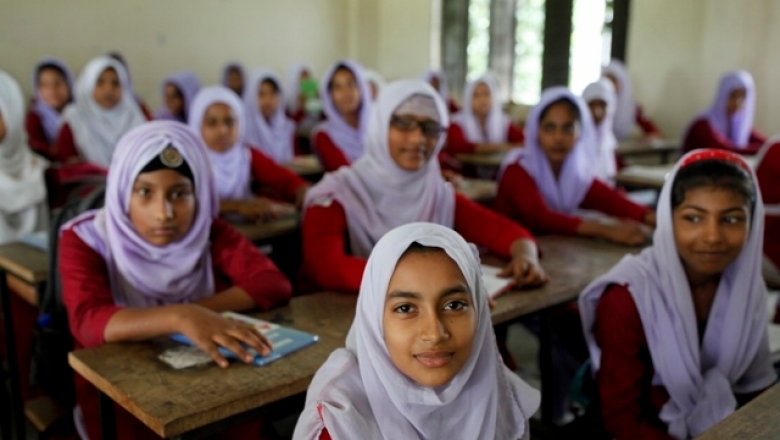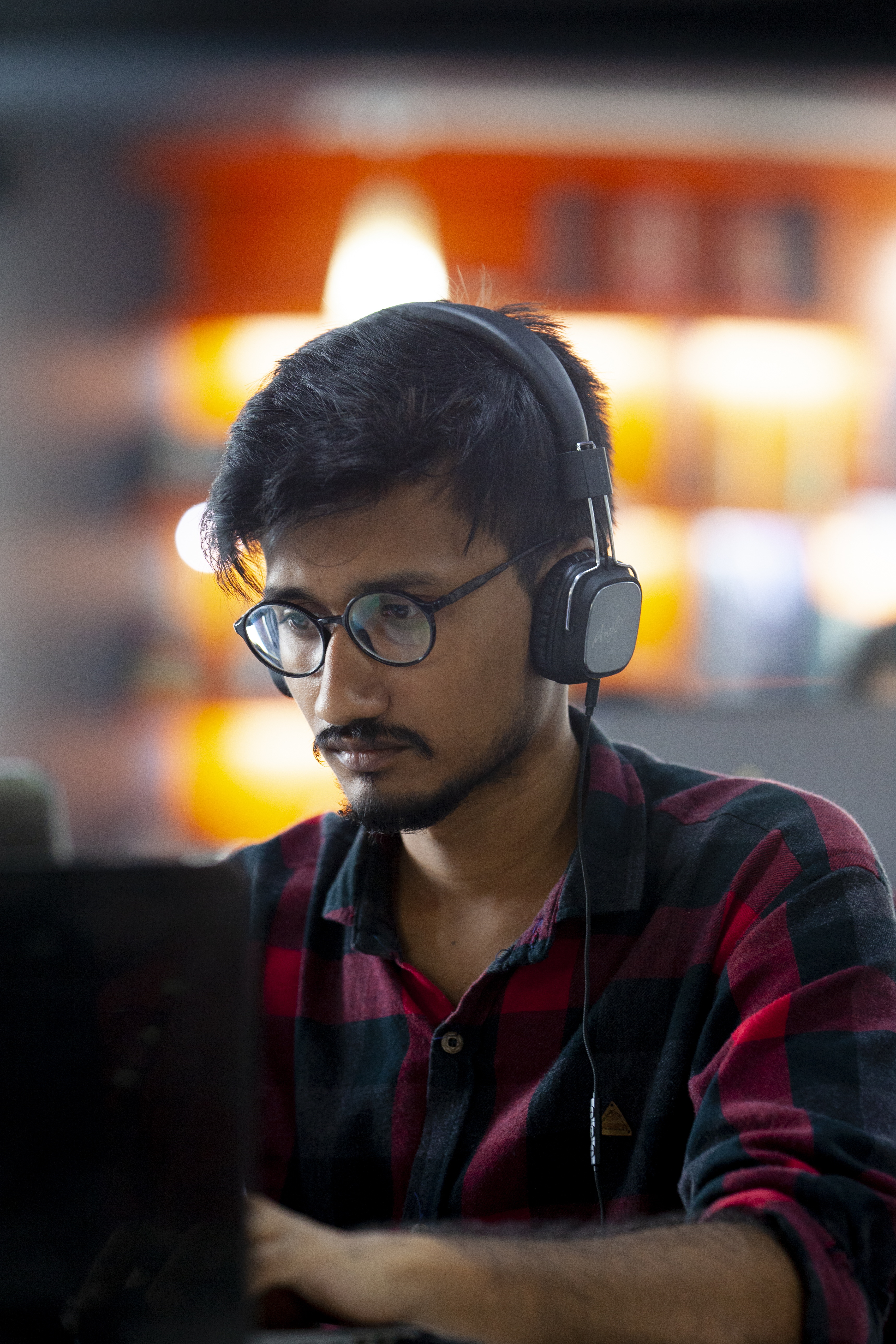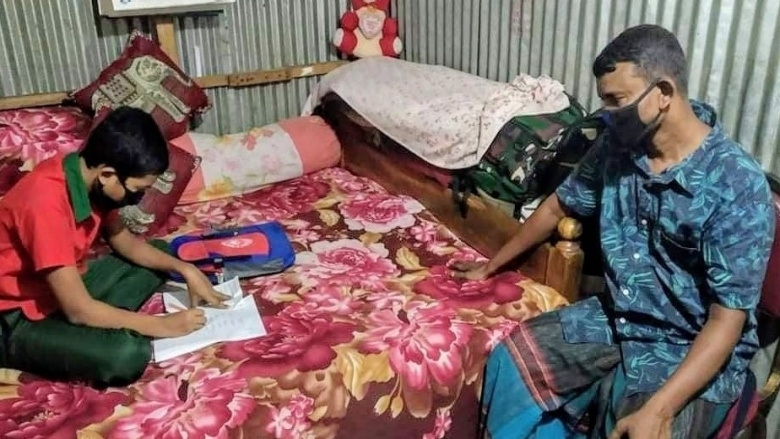Challenge
COVID-19 related school closures in Bangladesh started on March 17, 2020 and have continued into 2021, affecting about 38 million students and close to one million teachers. The government’s main response was through TV-based learning programs. However, within a couple of months of school closing it was clear that student learning, especially among adolescents, was at risk.
A Bank study undertaken in May 2020 showed that around 55 percent of Grade 9 stipend recipients do not have access to TVs. Even among those who do, only 43 percent of children chose to watch TV-learning programs, the primary of remote learning during school closures. There were no significant differences between male and female students in terms of whether they watched the broadcasts in the previous week. However, there were significant differences by wealth. Among those with access to TV-learning, 45 percent of richest students (in top-most wealth quartile) watched TV-lessons, while only 36 percent of poorest students (in bottom wealth quartile) did.
The pandemic negatively impacted the overall welfare of adolescents in several other ways. Another Bank study shows that in June 2020 nearly 34 percent of households interviewed had to cut back meals for adolescents. Further, around half of adolescents reported that they were spending less time on education than before the lockdown, with 94 percent reporting increased time on household chores or childcare. Although the difference is not statistically significant, there is evidence that girls are three percentage points more likely to be spending increased time on household chores and childcare since COVID-19 restrictions began. Also worrying is that 25 percent of mothers are concerned that adolescents will not return to school when schools reopen, and this was equally true for mothers of boys and girls.
These disruptions have led to a decline in student learning and retention. Bangladesh’s Learning Adjusted Years of Schooling (LAYS) are expected to fall from 6.0 years in 2019 to 5.3 years in 2021 (simulation), costing the Bangladesh economy between $67 billion and $114 billion in GDP (based on January 2021 estimates).
Approach
The World Bank stepped in quickly through its existing portfolio of education programs to help the government respond to the impact of the COVID-19 pandemic. This included support for pivoting to remote learning, limiting student dropouts, helping to prepare for school reopening, providing online teacher training, and building future resilience of the education system.
The Bank developed a $14.8 million COVID-19 School Sector Response (CSSR) project funded by the Global Partnership for Education (GPE) and implemented by the government. This project is supporting basic education (preprimary to Grade 10) for remote learning and school re-opening. The CSSR aims to produce at least 35 grade subject programs in digital format to disseminate through multi-modal platforms (television, mobile, radio and online) and reach around 2.5 million basic education students. In addition, physical learning packages will be distributed to another 150,000 students.
Through additional financing, the Quality Learning for All Program (QLEAP) project aims to introduce a remedial education program to initially be implemented in 500 lagging schools and blended teacher training programs to help accelerate student learning recovery. At the secondary level, the Ministry of Education (MoE) has prioritized support for an estimated one million poor and lagging students who are not reached by the mainstream remote learning channel. These students will receive targeted and customized support to to prevent school dropouts.
At the government’s request the Bank is restructuring its existing Transforming Secondary Education for Results Operation (TSERO) to channel $40 million to the education sector’s COVID response.
The Bank also provided significant technical assistance and evidence generation. The Ministry of Primary and Mass Education (MoPME) and Ministry of Education (MoE) developed a COVID-19 response and recovery plan which received initial assistance from GPE, UNICEF and the World Bank. The Bank also generated data and evidence on the uptake of remote learning, risks of student dropouts, learning losses, and broader student welfare impacts of the pandemic.


